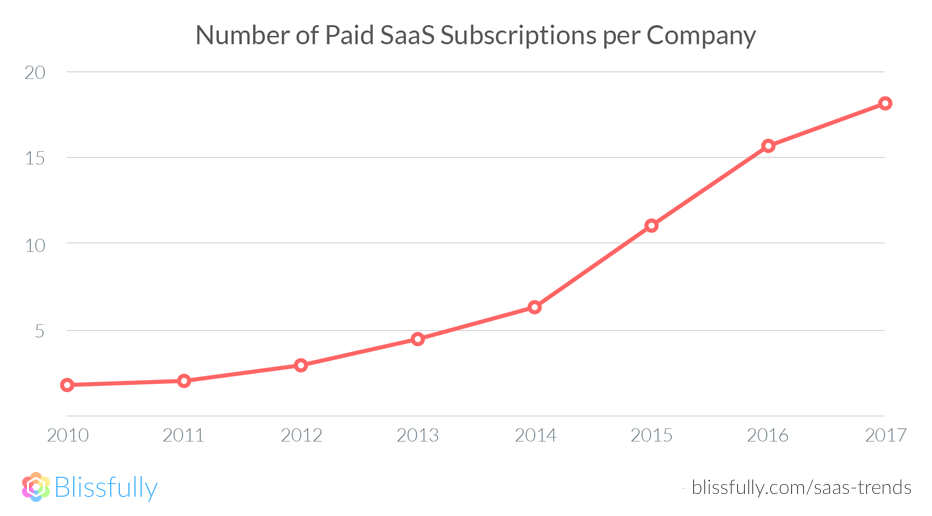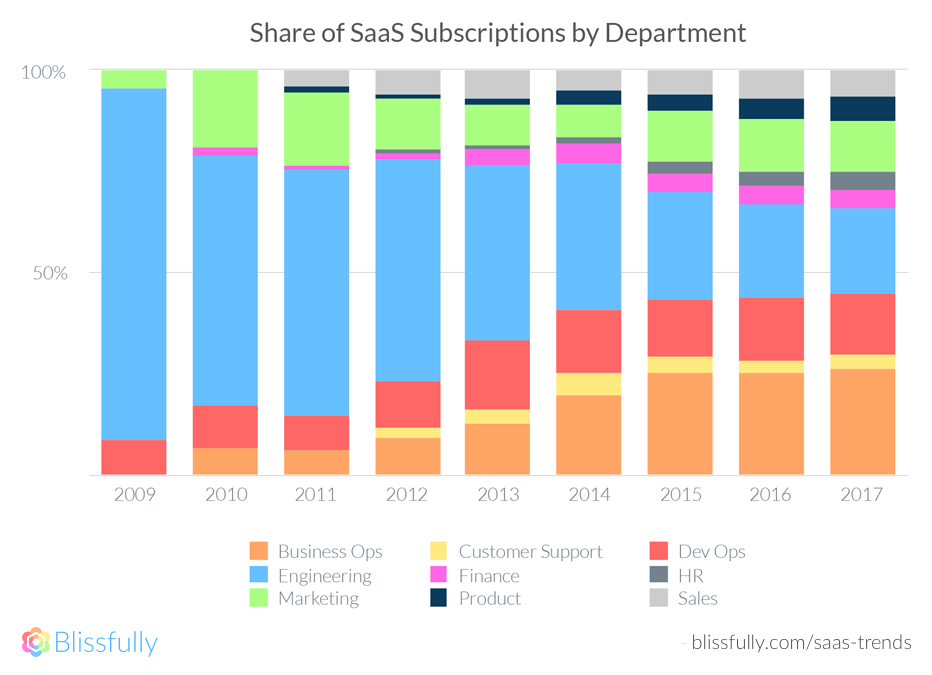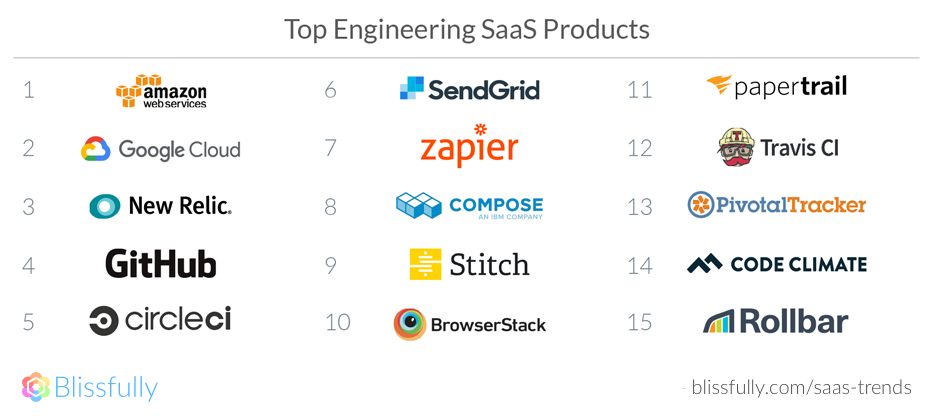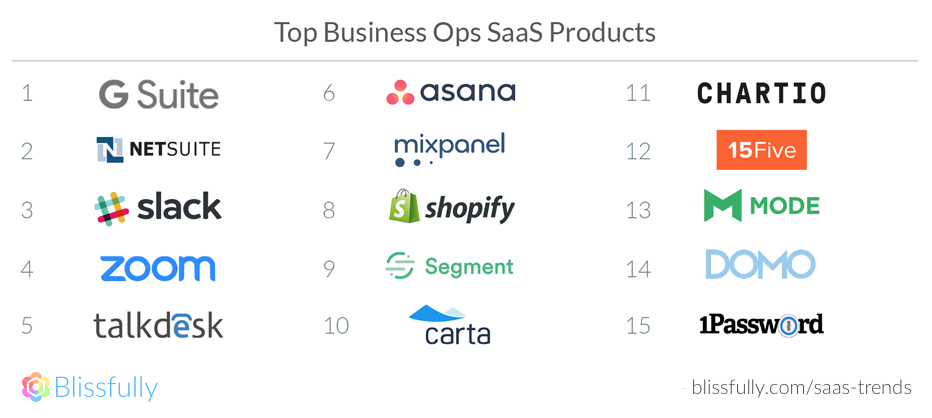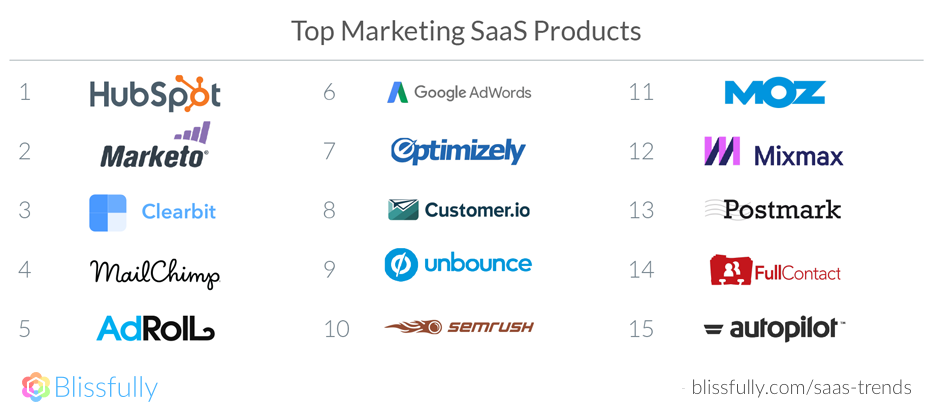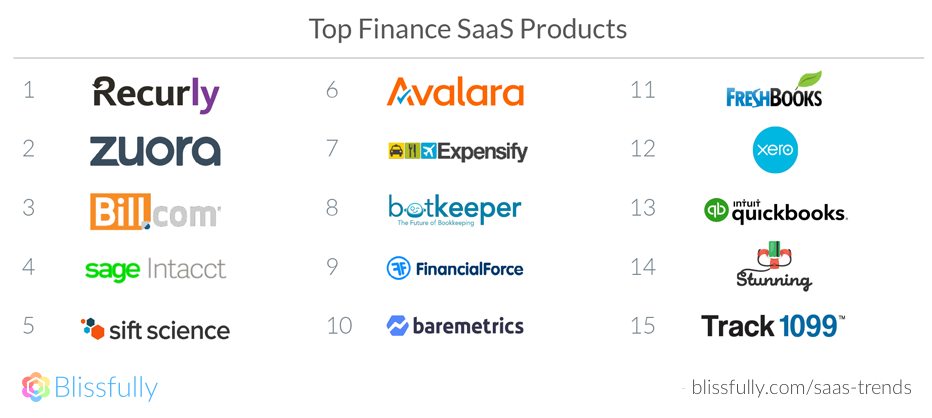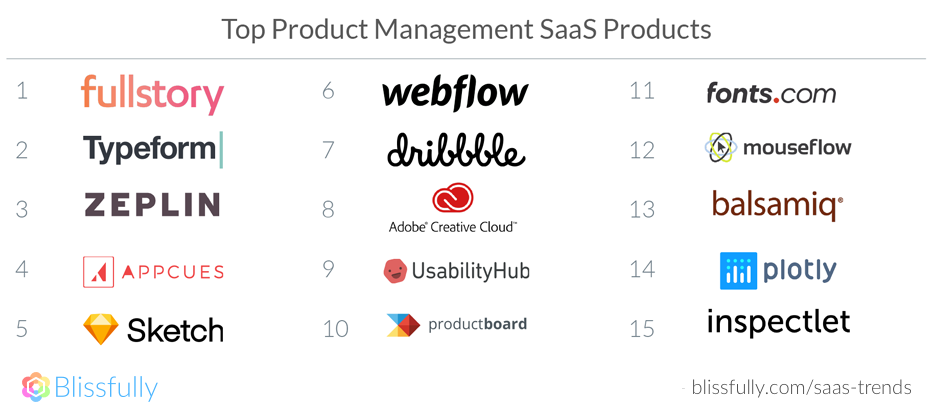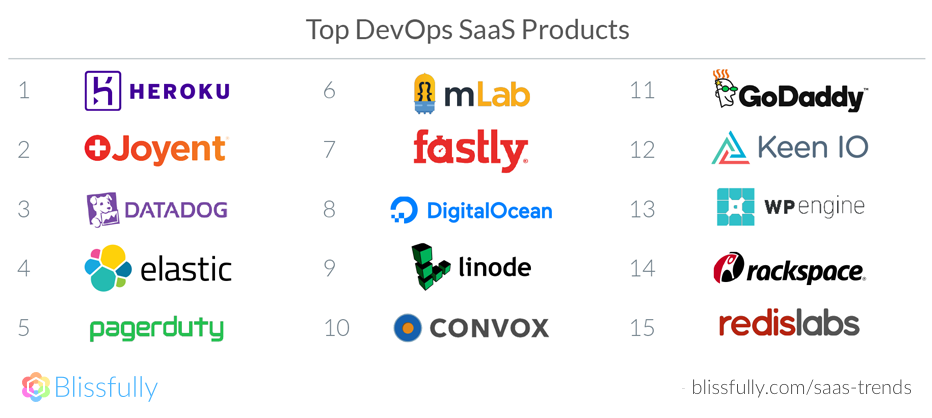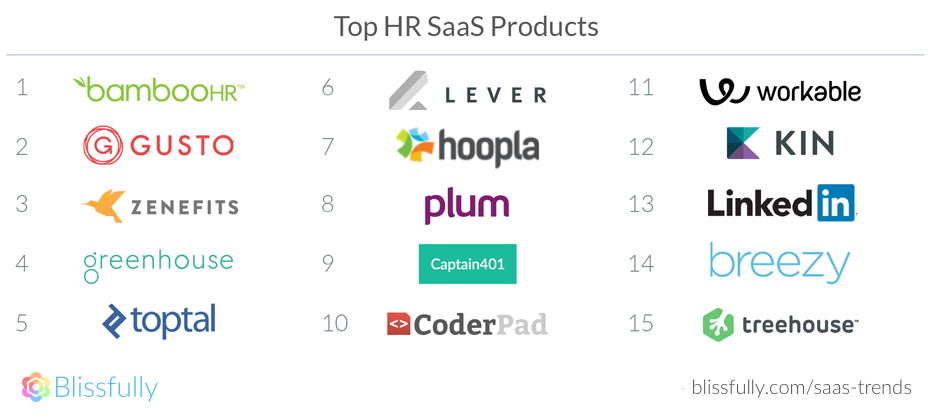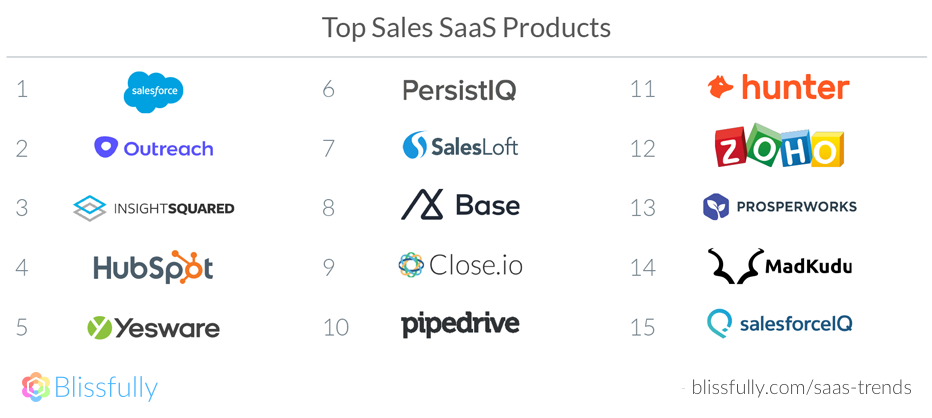Latest news about Bitcoin and all cryptocurrencies. Your daily crypto news habit.
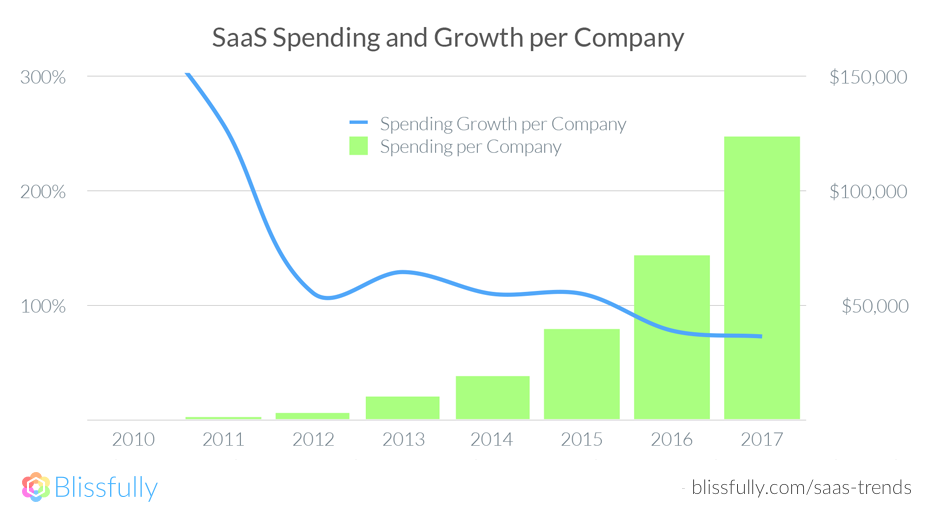
SaaS Growth: No End in Sight
Last year, 2017, saw a slight slow-down in the pace of new SaaS subscriptions, but an increase in the amount being spent on SaaS. So while it may look like we are starting to see some consolidation around tools, it’s also true that organizations are not shy about shelling out for software as a service that will help them grow and manage their businesses.
SaaS Trends: Why They Matter
It’s important to pay close attention to how software is being used in the modern business, because it’s the backbone of our economy today. Understanding SaaS trends can help businesses make good decisions about where to invest their own money. Additionally, digging deep on what’s working and what’s not can help uncover opportunities to improve.
As we’ve written about before, SaaS security has a long way to go. Additionally, there are often major opportunities for cost savings when teams pay attention to where they are investing their dollars to avoid feature overlap and optimize resources. Productivity can either be dramatically improved or hampered by technology, depending on how workflows are structured, so periodically evaluating your SaaS usage (and taking a look at the wider industry) is a good way to understand whether you are moving in the right direction.
Overall, it’s a good idea to pay attention to where SaaS momentum lies before you make any big decisions about where to invest, where to cut back, and how to better integrate and structure the technology your team already uses. Our hope is that this guide will help you do just that.
SaaS Usage By Organizational Department
The last ten years have resulted in a penetration of SaaS across all departments. While engineering was an unsurprising early frontrunner, and still a spending leader, Business Ops has taken the crown when it comes to number of subscriptions recent years. In 2018, it’s clear that SaaS is used widely across the entire organization.
On average, we are seeing 18 SaaS subscriptions and about $136,000 in total spend at each company. However, it’s worth noting that as of Q3 2017, the run rate was closer to 20 subscriptions and $186,000 in annualized spending, so we expect these numbers to grow in 2018, just as they have in previous years.
Let’s take a look at a departmental breakdown in SaaS usage and trends.
💻 Engineering
Engineering teams are naturally powered by technology, and since they are of course the pioneers of SaaS, it makes sense that they were the first to jump in headlong. In 2009, engineering far outpaced other departments, with an average of 20 SaaS subscriptions per organization. Today, that growth continues unabated, with 2017 seeing about 1,108 subscriptions per org. Of course, there’s some overlap between engineering and DevOps, but here are the top three favorite products among pure-engineering teams:
- AWS: No one who works in the cloud will be surprised to find AWS at the top of this list, as the top cloud infrastructure provider out there.
- Google Cloud: Google Cloud hasn’t captured quite the market share that AWS has, but they are also a frontrunner in the cloud infrastructure game.
- New Relic: A “digital intelligence platform,” New Relic offers deep and wide insight into how your entire stack is performing, and has long been a favorite among devs.
💼 Business Ops
Just behind engineering, business ops stands out as a heavy user of SaaS products. In 2010, they already had an average of four subscriptions, and today that number has skyrocketed to 1370 per organization. It makes a lot of sense. Business ops pros are charged with keeping the whole organization humming along smoothly, and investing in tools that streamline, simplify, and facilitate communication is at the heart of what they do. Here are the top three business ops SaaS applications:
- GSuite: Not shocking to find the suite of apps that runs so many of today’s businesses here. GSuite is a favorite of ours for its ease of use, comprehensiveness, and security features.
- NetSuite: Need to manage your business’s financials, operations, and customer relations all in one place? NetSuite has your back.
- Slack: Perhaps the hottest communication tool on the market today, Slack is popular for its ability to replace email and bring teams into closer alignment. Plus, it’s fun to use.
📣 Marketing
Marketing has gone from an average of one SaaS subscription per organization to a whopping 647 today. As marketing becomes an increasingly technical and KPI-focused discipline, it’s no surprise that technology has been relied upon to support growth. This ranges from the big marketing automation platforms to a plethora of tailored solutions for everything from landing pages to design. Some of the top SaaS products for marketers include:
- Hubspot: No surprise this all-in-one marketing automation tool rises to the top, given it is able to scale up or down for everyone from SMBs to the enterprise.
- Marketo: Another marketing automation SaaS winner, Marketo is a popular tool among enterprises.
- Clearbit: Clearbit enables marketers to better understand their prospects, empowering the marketing department with data-driven insights.
😀 Customer Support
If your customers are tech-savvy, you certainly better be as well. It took a little while for customer support teams to start adopting SaaS, with 2012 seeing an average of just five apps per organization. They are still one of the lowest subscription rate departments, with just 168 on average in 2017, but it’s clear that the SaaS tools they are using are making a big difference. Customers today expect excellent support, and doing this at scale quite simply requires good technology. Some favorites for customer support include:
- Zendesk: A popular all-in-one customer service platform that offers everything from live chat to help desk to ticketing and more.
- Help Scout: Help desk software that aims to make customers service interactions more human (bonus points for being HIPAA compliant!)
- Front: A shared inbox for teams, Front makes it easier to interact with customers without dropping the ball along the way. empowering the marketing department with data-driven insights.
💵 Finance
Time to get your financial house in order? In 2018, you’d be hard-pressed to do this successfully without the support of some excellent SaaS finance tools. While security and compliance concerns (and perhaps a bit of an old-school attitude) led to slow growth in this department — which averaged just one subscription as late as 2011 — it has clearly taken off in recent years. Today, the average finance department has 216 SaaS subscriptions under its belt. The best apps for their money?
- Recurly: As its name hints, Recurly offers a smart platform for companies who bill on a subscription basis.
- Zuora: Similar to Recurly, Zuora offers a subscription management platform that is well-liked by businesses who need to manage revenue closely.
- Bill.com: This service not only helps businesses get paid, but also helps them manage payments to vendors and contractors themselves.
👩🏾💻 Product
Building a SaaS product? You’re gonna want some SaaS products to help you manage the process…In fact, even companies who aren’t building technology themselves can benefit from some of the powerful product development and management tools on the market today. Below are three popular SaaS tools for product teams:
- FullStory: Want to understand how your customers are interacting with your platform so you can improve the experience? FullStory’s the tool for you.
- Typeform: Most businesses need at least some forms on their websites, and Typeform offers a well-designed, streamlined way to build them.
- Zeplin: Need to shorten the path between design and development? Zeplin makes it easy to collaborate and ensure the final product looks exactly how it should.
👨🏼🔧 DevOps
DevOps teams are natural early adopters, since they’re steeped in technology. Behind only engineering and business ops, they have grown from an average of two subscriptions per team in 2009 to 767 today. Since DevOps teams are tasked with both development and operations tasks, it makes sense that their SaaS investments span the gamut, with a focus on simplifying infrastructure to support continuous application delivery. Here are some stand-out SaaS tools that DevOps teams rely on:
- Heroku: This cloud platform enables companies to build, deliver, monitor and scale apps without worrying about infrastructure requirements.
- Joyent: Billing itself as “next-generation cloud,” Joyent offers computing, storage, and analytics for any type of infrastructure, including containers.
- Datadog: Monitoring and analytics for your entire technology stack, offering visibility and insights.
💙 HR
Human resources teams have been the slowest to start adopting SaaS, with just two subscriptions on average per team as late as 2012. Today, it’s closer to 240. That growth comes from increasingly well-operationalized HR processes (like onboarding and offboarding) that require support in the form of technology to keep them running smoothly. Some big hits with HR professionals include:
- BambooHR: A powerful platform that includes everything from applicant tracking to self-onboarding to HR reporting.
- Gusto: HR, payroll, and benefits, all in one — plus access to HR experts on demand — makes this a popular choice for SMBs.
- Zenefits: This tool has something for everyone, from HR pros to customers to benefits brokers, offering a streamlined way to handle payroll, benefits, compliance, and more.
🤝 Sales
Last but not least, sales teams were a bit late to the game, with just four subscriptions on average in 2011. By last year, they were up to 331. That’s no surprise, given that sales teams are continually measured and KPI’d on how fast, efficiently, and effectively they are able to sell. There’s always room for improvement and an opportunity to trim the fat. Technology can be a huge enabler here. The three most popular SaaS tools for sales are:
- Salesforce: A lumbering SaaS giant, Salesforce offers pretty much anything a sales team could ask for, from opportunity tracking to proposals to analytics — and beyond.
- Outreach: This sales engagement platform helps teams fill the pipeline, book meetings, and find out which sales tactics actually work.
- InsightSquared: Time to show the board how things are going? InsightSquared turns data into clear, actionable revenue reports.
With Great Power Comes Great Responsibility
The SaaS explosion is a good thing. It’s easier to deploy and faster to adopt, and it doesn’t require IT or developers to get started. Even less tech-savvy team members can deploy many SaaS products. People prefer it because apps can solve a wide range of business challenges. But when an organization invests in a lot of apps, it can lead to chaos pretty quickly.
You have to consider how certain tools get along (or don’t) with other tools. You need to look for ways to streamline tech-heavy workflows. You need to ensure you are meeting security and compliance requirements and responsibilities, and treating customers’ data with the level of respect and sensitivity it deserves. You also need to ensure you are optimizing both operations and spending around SaaS tools, so that proliferation doesn’t equal waste.
Investing in software as a service responsibly means addressing these challenges. That’s the only way to ensure your organization sees a net benefit from all that amazing technology.
Blissfully: The Antidote to SaaS Chaos
Sound hard? Don’t worry. Blissfully helps hundreds of companies effortlessly manage their SaaS vendors, across thousands of subscriptions and millions in monthly spend. Once installed, Blissfully displays both historical and up-to-the-minute accurate representations of SaaS usage, spend, and data management.
Blissfully offers:
- Automatic SaaS tool inventorying (including free and unsanctioned apps)
- Spend tracking and optimization
- Security monitoring to reduce risk
- Built-in IT workflow streamlining and automation
View more and download the full report free
You can view the full report and download a PDF at blissfully.com/saas-trends/2018-annual/
Originally published at www.blissfully.com.
Blissfully 2018 Annual SMB SaaS Trends Report was originally published in Hacker Noon on Medium, where people are continuing the conversation by highlighting and responding to this story.
Disclaimer
The views and opinions expressed in this article are solely those of the authors and do not reflect the views of Bitcoin Insider. Every investment and trading move involves risk - this is especially true for cryptocurrencies given their volatility. We strongly advise our readers to conduct their own research when making a decision.
